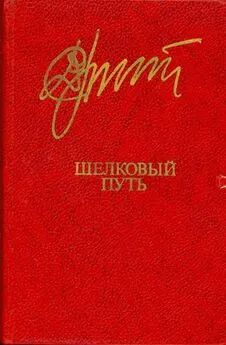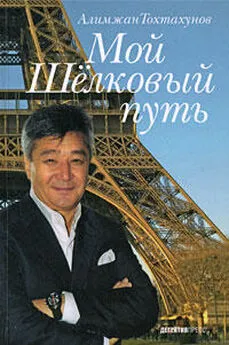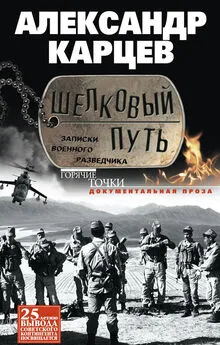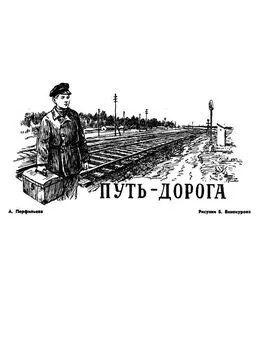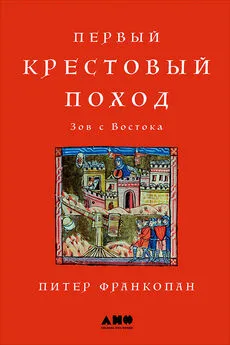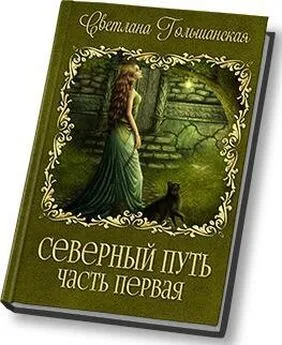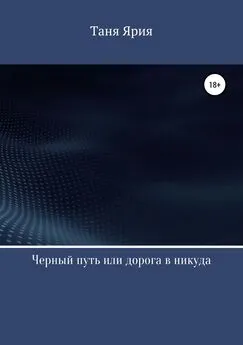Питер Франкопан - Шелковый путь. Дорога тканей, рабов, идей и религий
- Название:Шелковый путь. Дорога тканей, рабов, идей и религий
- Автор:
- Жанр:
- Издательство:Литагент 5 редакция
- Год:2017
- Город:Москва
- ISBN:978-5-699-95706-4
- Рейтинг:
- Избранное:Добавить в избранное
-
Отзывы:
-
Ваша оценка:
Питер Франкопан - Шелковый путь. Дорога тканей, рабов, идей и религий краткое содержание
Вы увидите, что история развивалась совсем не так, как мы привыкли изучать в школе. Так, столетия назад интеллектуальные центры мира, «Оксфорды» и «Кембриджи», «Гарварды» и «Йели», находились не в Европе, а в городах Средней Азии, куда и съезжалась вся просвещенная молодежь в поисках успеха.
Шелковый путь. Дорога тканей, рабов, идей и религий - читать онлайн бесплатно ознакомительный отрывок
Интервал:
Закладка:
418
Р. Reynolds, Trade in the Western Mediterranean, AD 400–700: The Ceramic Evidence (Oxford, 1995); S. Kinsley, ‘Mapping Trade by Shipwrecks’, in M. Mundell Mango (ed.), Byzantine Trade, 4th–12th Centuries (Farnham, 2009), рр. 31–36; M. McCormick, Origins of the European Economy: Communications and Commerce, AD 300–900 (Cambridge, 2001); Wickham, Inheritance of Rome , esр. р. 255ff.
419
de la Vaissière, Sogdian Traders , рр. 279–286.
420
al-Ya ʿqūbī and al-Balādhurī, цитируется по J. Banaji, ‘Islam, the Mediterranean and the Rise of Capitalism’, Historical Materialism 15 (2007), рр. 47–74, esр. рр. 59–60.
421
О свободных структурах в согдийском мире в это время см. de la Vaissière, Marchands sogdiens , рр. 144–176.
422
См. здесь F. Grenet and E. de la Vaissière, ‘The Last Days of Panjikent’, Silk Road Art and Archaeology 8 (2002), рр. 155–196.
423
См. здесь J. Karam Skaff, Sui-Tang China and Its Turko-Mongol Neighbours: Culture, Power, and Connections, 580–800 (Oxford, 2012).
424
D. Graff, ‘Strategy and Contingency in the Tang Defeat of the Eastern Turks, 629–630’, in N. di Cosmo (ed.), Warfare in Inner Asian History, 500–1800 (Leiden, 2002), рр. 33–72.
425
de la Vaissière, Sogdian Traders , рр. 217–220.
426
C. Mackerras, The Uighur Empire According to the T’ang Dynastic Histories (Canberra, 1972); T. Allsen, Commodity and Exchange in the Mongol Empire: A Cultural History of Islamic Textiles (Cambridge, 1997), р. 65.
427
C. Beckwith, ‘The Impact of Horse and Silk Trade on the Economics of T’ang China and the Uighur Empire: On the Importance of International Commerce in the Early Middle Ages’, Journal of the Economic and Social History of the Orient 34 (1991), рр. 183–198.
428
J. Kolbas, ‘Khukh Ordung: A Uighur Palace Complex of the Seventh Century’, Journal of the Royal Asiatic Society 15.3 (2005), рр. 303–327.
429
L. Albaum, Balalyk-Tepe: k istorii material’noĭ kul’tury i iskusstva Tokharistana (Tashkent, 1960); F. Starr, Lost Enlightenment: Central Asia’s Golden Age from the Arab Conquest to Tamerlane (Princeton, 2014), р. 104.
430
A. Walmsley and K. Damgaard, ‘The Umayyad Congregational Mosque of Jerash in Jordan and its Relationship to Early Mosques’, Antiquity 79 (2005), рр. 362–378; I. Roll and E. Ayalon, ‘The Market Street at Apollonia – Arsuf’, BASOR 267 (1987), рр. 61–76; K. al-As ʿad and Stepniowski, ‘The Umayyad suq in Palmyra’, Damazener Mitteilungen 4 (1989), рр. 205–223; R. Hillenbrand, ‘Anjar and Early Islamic Urbanism’, in G. – Р. Brogiolo and B. Ward-Perkins (eds), The Idea and Ideal of the Town between Late Antiquity and the Early Middle Ages (Leiden, 1999), рр. 59–98.
431
Hilāl al-Ṣābiʾ, Rusūm dār al-khilāfah , in The Rules and Regulations of the Abbasid Court , tr. E. Salem (Beirut, 1977), рр. 21–22.
432
Ibn al-Zubayr, Kitāb al-hadāyā wa al-tuḥaf , in Book of Gifts and Rarities: Selections Compiled in the Fifteenth Century from an Eleventh-Century Manuscript on Gifts and Treasures , tr. G. al-Qaddūmī (Cambridge, MA, 1996), рр. 121–122.
433
B. Lewis, Islam: From the Prophet Muhammad to the Capture of Constantinople (New York, 1987), рр. 140–141.
434
Muqaddasī, Best Divisions for Knowledge , р. 60.
435
Там же, рр. 107, 117, 263.
436
J. Bloom, Paper before Print: The History and Impact of Paper in the Islamic World (New Haven, 2001).
437
Muqaddasī, Best Divisions for Knowledge , рр. 6, 133–134, 141.
438
Two Arabic travel books: Accounts of China and India , ed. and trans. T. Mackintosh-Smith and J. Montgomery (New York, 2014), р. 37.
439
Там же, рр. 59, 63.
440
J. Stargardt, ‘Indian Ocean Trade in the Ninth and Tenth Centuries: Demand, Distance, and Profit’, South Asian Studies 30.1 (2014), рр. 35–55.
441
A. Northedge, ‘Thoughts on the Introduction of Polychrome Glazed Pottery in the Middle East’, in E. Villeneuve and Р. Watson (eds), La Céramique byzantine et proto-islamique en Syrie-Jordanie (IVe – VIIIe siècles apr. J. – C.) (Beirut, 2001), рр. 207–214; R. Mason, Shine Like the Sun: Lustre-Painted and Associated Pottery from the Medieval Middle East (Toronto, 2004); M. Milwright, An Introduction to Islamic Archaeology (Edinburgh, 2010), рр. 48–49.
442
H. Khalileh, Admiralty and Maritime Laws in the Mediterranean Sea (ca. 800–1050): The Kitāb Akriyat al Sufun vis-à-vis the Nomos Rhodion Nautikos (Leiden, 2006), рр. 212–214.
443
Muqaddasī, Best Divisions for Knowledge , рр. 347.
444
Daryaee, ‘Persian Gulf Trade’, рр. 1–16; Banaji, ‘Islam, the Mediterranean and the Rise of Capitalism’, рр. 61–62.
445
E. Grube, Cobalt and Lustre: The First Centuries of Islamic Pottery (London, 1994); O. Watson, Ceramics from Islamic Lands (London, 2004).
446
Du Huan, Jinxing Ji, цитируется по X. Liu, The Silk Road in World History (Oxford, 2010), р. 101.
447
Kitāb al-Tāj (fī akhlāq al-mulūk) in Le Livre de la couronne: ouvrage attribute à Ǧahiz , tr. C. Pellat (Paris, 1954), р. 101.
448
Заимствования у Сасанидов – Walker, Qardagh , р. 139. Сцены охоты из дворцов Тегерана – D. Thompson, Stucco from Chal-Tarkhan-Eshqabad near Rayy (Warminster, 1976), рр. 9–24.
449
D. Gutas, Greek Thought, Arabic Culture: The Graeco-Arabic Translation Movement in Baghdad and Early ʿ Abbasid Society (2nd–4th / 8th–10th Centuries (London, 1998); R. Hoyland, ‘Theonmestus of Magnesia, Hunayn ibn Ishaq and the Beginnings of Islamic Veterinary Science’, in R. Hoyland and Р. Kennedy (eds), Islamic Reflections, Arabic Musings (Oxford, 2004), рр. 150–169; A. McCabe, A Byzantine Encyclopedia of Horse Medicine (Oxford, 2007), рр. 182–184.
450
V. van Bladel, ‘The Bactrian Background of the Barmakids’, in A. Akasoy, Burnett and R. Yoeli-Tialim, Islam and Tibet: Interactions along the Musk Route (Farnham, 2011), рр. 82–83; Gutas, Greek Thought, Arabic Culture , р. 13.
451
См. Р. Pormann and E. Savage-Smith, Medieval Islamic Medicine (Edinburgh, 2007); Y. Tabbaa, ‘The Functional Aspects of Medieval Islamic Hospitals’, in М. Boner, M. Ener and A. Singer (eds), Poverty and Charity in Middle Eastern Contexts (Albany, NY, 2003), рр. 97–98.
452
Pormann and Savage-Smith, Medieval Islamic Medicine , р. 55.
453
E. Lev and L. Chipman, ‘A Fragment of a Judaeo-Arabic Manuscript of Sābūr b. Sahl’s Al-Aqrābādhīn al-Ṣaghīr Found in the Taylor-Schechter Cairo Genizah Collection’, Medieval Encounters 13 (2007), рр. 347–362.
454
Ibn al-Haytham, The Optics of Ibn al-Haytham, Books I–III: On Direct Vision , tr. A. Sabra, 2 vols (London, 1989).
455
W. Gohlman, The Life of Ibn Sina: A Critical Edition and Annotated Translation (New York, 1974), р. 35.
456
al-Jāḥiẓ, Kitāb al-Ḥayawān , cited by Pormann and Savage-Smith, Medieval Islamic Medicine, р. 23.
457
Mahsatī, Mahsati Ganjavi: la luna e le perle , tr. R. Bargigli (Milan, 1999); а также Bagherzadeh, ‘Mahsati Ganjavi et les potiers de Rey’, in Varia Turcica 19 (1992), рр. 161–176.
458
Augustine, The Confessions of St Augustine , tr. F. Sheed (New York, 1942), р. 247.
459
al-Mas ʿūdī, цитируется по Gutas, Greek Thought, Arabic Culture , р. 89.
460
Muqaddasī, Best Divisions for Knowledge , р. 8.
461
M. Barrucand and A. Bednorz, Moorish Architecture in Andalusia (Cologne, 1999), р. 40.
462
Например, M. Dickens, ‘Patriarch Timothy II and the Metropolitan of the Turks’, Journal of the Royal Asiatic Society 20.2 (2010), рр. 117–139.
463
Conant, Staying Roman , рр. 362–370.
464
Narshakhī, The History of Bukhara: Translated from a Persian Abridgement of the Arabic Original by Narshakhī , tr. N Frye (Cambridge, MA, 1954), рр. 48–49.
465
A. Watson, Agricultural Innovation in the Early Islamic World (Cambridge, 1983); T. Glick, ‘Hydraulic Technology in al-Andalus’, in M. Morony (ed.), Production and the Exploitation of Resources (Aldershot, 2002), рр. 327–339.
466
W. Davis, Readings in Ancient History: Illustrative Extracts from the Sources , 2 vols (Boston, 1912–1913), 2, рр. 365–367.
467
Ibn Khurradādhbih , Kitāb al-masālik wa-l-mamālik , tr. Lunde and Stone, ‘Book of Roads and Kingdoms’, in Ibn Fadlan and the Land of Darkness , рр. 99–104.
468
E. van Donzel and A. Schmidt, Gog and Magog in Early Christian and Islamic Sources: Sallam’s Quest for Alexander’s Wall (Leiden, 2010); также обратите внимание на эти источники F. Sezgin, Anthropogeographie (Frankfurt, 2010), рр. 95–97; Крачковский И. Ю. Арабская географическая литература. – М., 2004. – С. 138–141.
469
A. Gow, ‘Gog and Magog on Mappaemundi and Early Printed World Maps: Orientalizing Ethnography in the Apocalyptic Tradition’, Journal of Early Modern History 2.1 (1998), рр. 61–62.
470
Ibn Faḍlān, Book of Ahmad ibn Faḍlān , tr. Lunde and Stone, Land of Darkness , р. 12.
471
Там же, рр. 23–24.
Читать дальшеИнтервал:
Закладка:


